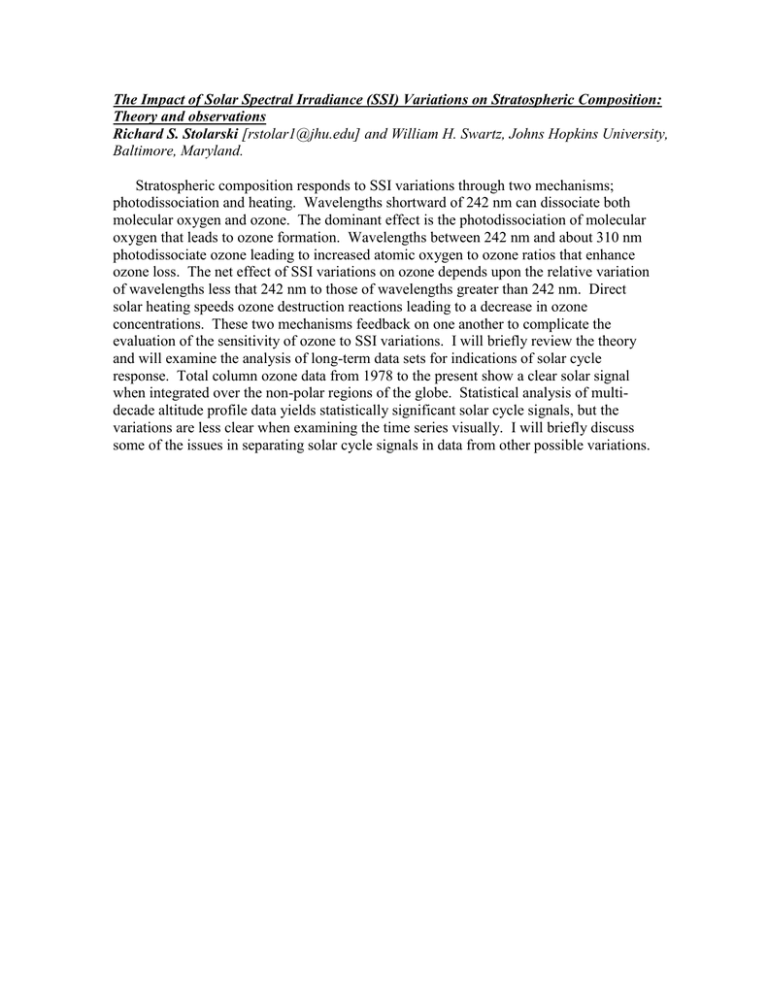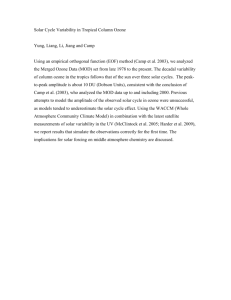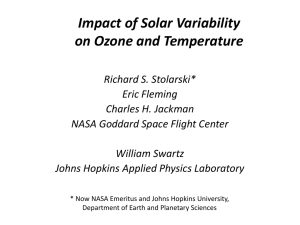The Impact of Solar Spectral Irradiance (SSI) Variations on Stratospheric... Theory and observations
advertisement

The Impact of Solar Spectral Irradiance (SSI) Variations on Stratospheric Composition: Theory and observations Richard S. Stolarski [rstolar1@jhu.edu] and William H. Swartz, Johns Hopkins University, Baltimore, Maryland. Stratospheric composition responds to SSI variations through two mechanisms; photodissociation and heating. Wavelengths shortward of 242 nm can dissociate both molecular oxygen and ozone. The dominant effect is the photodissociation of molecular oxygen that leads to ozone formation. Wavelengths between 242 nm and about 310 nm photodissociate ozone leading to increased atomic oxygen to ozone ratios that enhance ozone loss. The net effect of SSI variations on ozone depends upon the relative variation of wavelengths less that 242 nm to those of wavelengths greater than 242 nm. Direct solar heating speeds ozone destruction reactions leading to a decrease in ozone concentrations. These two mechanisms feedback on one another to complicate the evaluation of the sensitivity of ozone to SSI variations. I will briefly review the theory and will examine the analysis of long-term data sets for indications of solar cycle response. Total column ozone data from 1978 to the present show a clear solar signal when integrated over the non-polar regions of the globe. Statistical analysis of multidecade altitude profile data yields statistically significant solar cycle signals, but the variations are less clear when examining the time series visually. I will briefly discuss some of the issues in separating solar cycle signals in data from other possible variations.
![Richard S. Stolarski [], Eric Fleming, and Charles H.](http://s2.studylib.net/store/data/013086448_1-495cd425bcabb06346bcc7eab6519905-300x300.png)




![Attribution of the 11-Year Solar Cycle in Lower-Stratospheric Temperature and... Ales Kuchar [], Eugene Rozanov , William Ball](http://s2.studylib.net/store/data/012725756_1-0e253eb2ba08316b8369ea70f516fffb-300x300.png)
